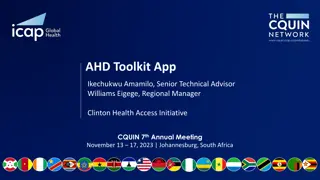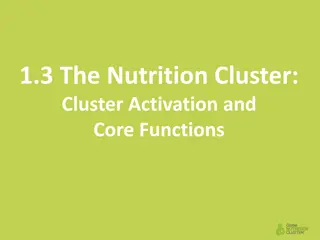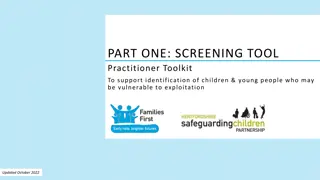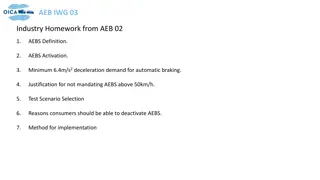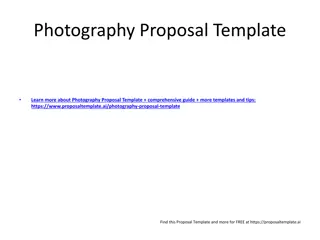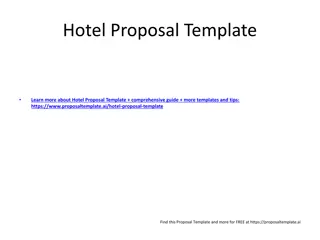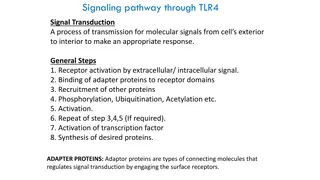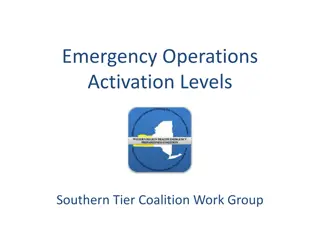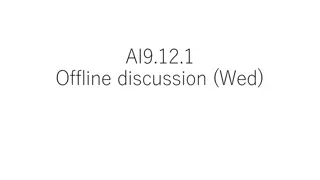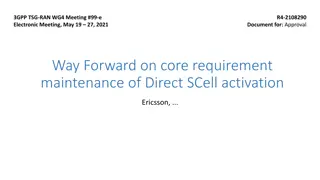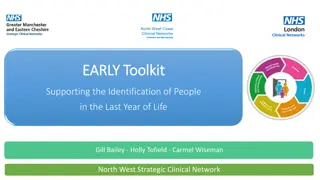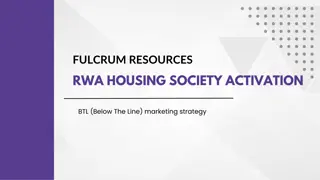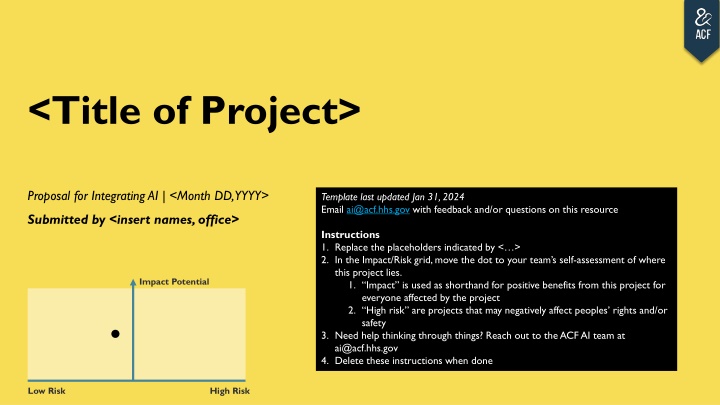
Proposal for AI Integration in Government Services
Explore a comprehensive proposal for integrating AI technology into government services to enhance operational efficiency and service delivery. The proposal addresses specific problem areas, solution requirements, and outlines how AI can be leveraged effectively. Contact the ACF.AI team for more information and guidance.
Download Presentation

Please find below an Image/Link to download the presentation.
The content on the website is provided AS IS for your information and personal use only. It may not be sold, licensed, or shared on other websites without obtaining consent from the author. If you encounter any issues during the download, it is possible that the publisher has removed the file from their server.
You are allowed to download the files provided on this website for personal or commercial use, subject to the condition that they are used lawfully. All files are the property of their respective owners.
The content on the website is provided AS IS for your information and personal use only. It may not be sold, licensed, or shared on other websites without obtaining consent from the author.
E N D
Presentation Transcript
<Title of Project> Proposal for Integrating AI | <Month DD, YYYY> Template last updated Jan 31, 2024 Email ai@acf.hhs.gov with feedback and/or questions on this resource Submitted by <insert names, office> Instructions 1. Replace the placeholders indicated by < > 2. In the Impact/Risk grid, move the dot to your team s self-assessment of where this project lies. 1. Impact is used as shorthand for positive benefits from this project for everyone affected by the project 2. High risk are projects that may negatively affect peoples rights and/or safety 3. Need help thinking through things? Reach out to the ACF AI team at ai@acf.hhs.gov 4. Delete these instructions when done Impact Potential Low Risk High Risk
Problem to Solve Activation Question: What is the problem you re trying to solve? Guidance In 3-4 sentences, be as specific as possible: describe who is experiencing what pain point because of what current challenge. Another way to think about this is from an opportunity lens: what is the opportunity you are pursuing and why? Align the problem/opportunity with an ACF, HHS, and/or USG priority area. Replace the following example with your project. Example: Priority Alignment An Intakes team receives referrals from another agency that comes in the format of unstructured emails. We have no control over the format of those referrals. Our Intakes team therefore manually structure the data into a database to enable analytics and operational tracking. This is a very labor-some process and when a high volume of referrals come in, managing high data quality while avoiding backlogs becomes more challenging. Example Operational efficiency 2
Solution Requirements Activation Question: What should solutions to this problem achieve? Guidance What does success look? In other words: what are the measures that will demonstrate whether a solution does what you wanted it to do. Consider success from the perspectives of: relevant staff; the customer (internal and/or external); time and cost savings; and fairness. Refer to the Tools for Measuring Successfor more ideas! Activation Question: What are the boundaries a successful solution should stay within? Guidance For example, is there a specific group of people who cannot have additional work shifted to them? Is there a specific timeline the solution must be in place? Is there a specific level of accuracy needed? Replace the placeholders indicated by < > with the information for your proposed project Success Criteria Solution Boundaries <Limit description> <Success description> <Limit description> <Success description> <Limit description> <Success description> 3
AI Proposal Activation Question: How would AI be part of the solution to the problem you re trying to solve? Guidance Replace the placeholders indicated by < > with the information for your proposed project 1. <for example, recommendations to specific people or draft text> 2. <one output per number> AI System Outputs 3. <one output per number > <Traditional or Generative> Kind of AI <Internal (e.g. USG staff, contractors) or External (e.g. grantees, public)> User Group <list existing or new processes the AI system would become part of> <one output per bullet> Related Processes <one output per bullet> 4
Alternative Approaches Activation Question: What non-AI approaches did you consider that could help solve the problem? Guidance For instance: Process improvements? Simple automations that do not involve AI? Activation Question: Given these non-AI alternatives, why should AI be leveraged? Guidance What would be the consequence(s) of not using the AI approach? Alternatives Considered Given Alternates, Why AI is the Right Tool <Brief description of alternate approach considered> <Reason> <Reason> <Brief description of alternate approach considered> <Reason> <Brief description of alternate approach considered> 5
People Mapping Activation Questions: Who would be affected by the AI system? How would you engage these people to understand what they need, get feedback, and build trust? Guidance Be as specific as possible. For who, consider the people using the AI system, the people whose data are used in the AI system, and the people whose lives may be affected by the outputs of the AI system. Detail specific key populations, such as children, people with disabilities, people with low English proficiency, older adults, and people living in more rural areas. For how, are there particular organizations or people you d reach out to for different perspectives? How will you incorporate input from people with lived experience, including children if applicable? How regularly would you engage? How would the AI system team be held accountable? You might not know all the details yet, especially if you re not sure about budget availability yet; in that case, consider describing the Ideal engagement plan and the Bare Minimum engagement plan. <Group Description> <Group Description> <Group Description> <if relevant, list relevant subgroups of people> <if relevant, list relevant subgroups of people> <if relevant, list relevant subgroups of people> Engagement Plan Engagement Plan Engagement Plan <Describe how you would engage people affect to understand their needs, get feedback, and build trust> <Describe how you would engage people affect to understand their needs, get feedback, and build trust> <Describe how you would engage people affect to understand their needs, get feedback, and build trust> < > < > < > 6
Data Download Data overview: <in one sentence, what is the data needed to train the AI system?> Activation Question: What kind of data does the AI system(s) need? Guidance Replace the placeholders indicated by < > with the information for your proposed project. Activation Question: How would you gather the data for the AI system and ensure it is of appropriate quality for the intended purpose? Guidance Replace the placeholders indicated by < > Data type: <e.g. text, visual, audio, structured database> Data owner: <who has the needed data?> Availability: <already exists or needs to be collected> Used before for same/similar purpose? < data used has previously been used for the same or similar intended purpose> yes or no if the Non-public data? < publicly available> yes or no if any of the data used is not Consent plan: <Who needs to consent to the data being used for this purpose? Has consent been received?> PII? < information> yes or no if the data includes personal identifying Data quality plan: PHI? < health information> yes or no if the data is subject to HIPAA (protected <How would you check for and address data quality (e.g. completeness, accuracy) issues?> FERPA? < (children s education records)> yes or no if the data is subject to FERPA < > 7
Data Representativeness Activation Question: Is the intended dataset representative of the people, entities, etc. that will be impacted by the AI system? If not, how can the biases in the data be mitigated? Guidance If you re not sure, share what the data should reflect to be representative and note any hypothesized biases that you d want to test. <description> <description> Representative data means <description> <description> <description> Bias mitigation approach <description> 8
Do No Harm Activation Question: How might this AI system cause harm? Guidance Replace the placeholders indicated by < > with the information for your proposed project. Activation Question: How might the risks be mitigated so that the expected benefits of the AI system outweigh the potential risks? Guidance How can the AI system s scope be designed to minimize these risks? What fallbacks could be in place in case the AI system is shut down? Worst Case Scenario <What is the worst thing that could happen if the AI system fails or gets something wrong?> Risk Mitigation Approaches <risk mitigation approach> Potential to cause peoples loss of rights? < yes or no> <risk mitigation approach> Potential to negatively impact peoples physical or mental safety? < yes or no> <risk mitigation approach> Potential to create/exacerbate barriers for some people? < yes or no; consider children, persons with disabilities, older adults, or people of different demographic backgrounds> Reputational risk to ACF/HHS/USG? < brief explanation if yes> yes or no, with Impact of data loss/compromise effect: <What would happen if data in the system was stolen or otherwise compromised?> 9
Implementation Considerations Activation Question: What investments would be needed for the proposed solution? Guidance Consider upfront and ongoing costs,changes in risk appetite, staffing needs, and leadership support. Activation Question: What implementation challenges do you anticipate, and what would help overcome them? Guidance Consider what blockers might cause the project to pause or stop altogether. Needed Investments Anticipated Challenges <financial> <blocker> Mitigation approach: <explain> <staffing> <blocker> <culture change / risk appetite> Mitigation approach: <explain> <leadership support> <blocker> Mitigation approach: <explain> 10
Approximate Timeline Activation Question: What is your rough project timeline? Guidance Adjust the shaded cells to reflect your best current estimate for when you would want to achieve the outlined milestones. MM/YY MM/YY MM/YY MM/YY MM/YY MM/YY MM/YY MM/YY MM/YY MM/YY MM/YY MM/YY Gather Buy-In Pilot Go/No- Go Decision Acquisition (if applicable) Pilot* Full-Scale Go/No-Go Decision * If your team does not plan to pilot, please explain why. For example, if your proposal is for a one-time use of AI that is not intended to result in an ongoing AI system in production, a pilot might not be applicable. If your proposal is for an eventual production AI system, you must run a pilot. Pilots are an opportunity to test, measure, and refine an AI system and surrounding processes before scaling a system to full usage. 11



